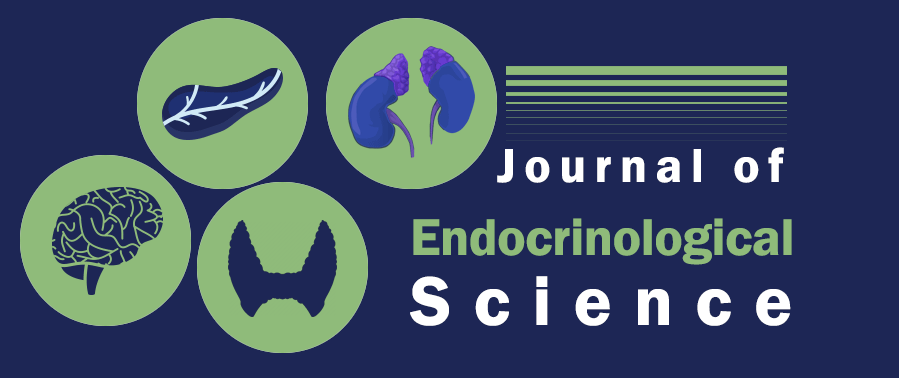Hypothalamic Inflammation and Hypothalamic Obesity: Case Report and Mini-Review
Context: Autoimmune hypothalamitis (AHT) is extremely rare and appears on the Magnetic resonance Imaging (MRI) as a predominant suprasellar mass. There are only a few case reports of AHT in the literature and none was presented together with hypothalamic obesity (HO). Methods of prediction of hypothalamus (HT) damage are included as the pathogenesis of HO.
Case description: A 19-year-old female was operated with a transcranial operation due to a large suprasellar mass with symptoms of visual deficiencies and headache. The diagnosis of AHT was confirmed in specimen of lymphocyte-dominated infiltration with plasma cells, neutrophils and fibrocytes. The operation reduced the AHT mass and a further reduction was accomplished by long-term oral Prednisone. Directly after operation she suffered from hypothalamic obesity which worsened after the introduction of Prednisone treatment. During Prednisone treatment a reduction in the inflammation mass and improvement of vision was recorded. She was treated with glucagon-like peptide 1 receptor agonist and Metformin as treatment for her diabetes mellitus type II and with supplementations of her pituitary insufficiencies. The patient exhibits dramatic weight reduction while on a strict caloric diet at two follow-up occasions. However, this effect was reversed once the patient had stopped the calorie restricted diet.
Conclusion: The coexistence of AHT and HO is extremely difficult to treat as the former involves Prednisone treatment. Pharmacological intervention of HO has had limited effect on weight, but extreme diet was successful, however with short endurance.
DOI: 10.29245/2767-5157/2022/1.1121 View / Download PdfMarathon Running and Sexual Libido in Adult Men: Exercise Training and Racing Effects
We examined whether endurance training for a standard marathon (42.2 km) had a greater influence on male libido than more generalized endurance exercise training. We surveyed adult men (>1000) who regularly engaged in endurance running to evaluate exercise training histories-patterns and libido characteristics. Our participants were primarily recruited from North America and Europe. Results indicate men conducting marathon training had lower libido scores (p<0.05; ~20%, d=0.44) than those not doing such specific training. Factors most related to libido were: 1) the number of years of training, and 2) the proportion of high-intensity effort conducted in training (inverse relationships); regardless of whether marathon training was performed or not. Our survey approach did not allow us to determine the cause of the reduced libido, but we speculate it could relate to: 1) chronic physical fatigue from high volumes of exercise training, 2) behavioral accommodations in energy expenditure, or else ‘Relative Energy Deficiency in Sport’ (RED-S) syndrome, and/ or 3) endocrinological adaptations as a result of the exercise training (i.e., low testosterone). From a practical perspective, we recommend couples attempting conception should inform their healthcare providers of the male partner’s exercise habits concerning endurance running as this may be a factor relative to potential infertility.
DOI: 10.29245/2767-5157/2022/1.1123 View / Download Pdf